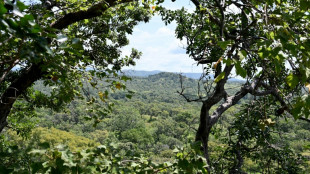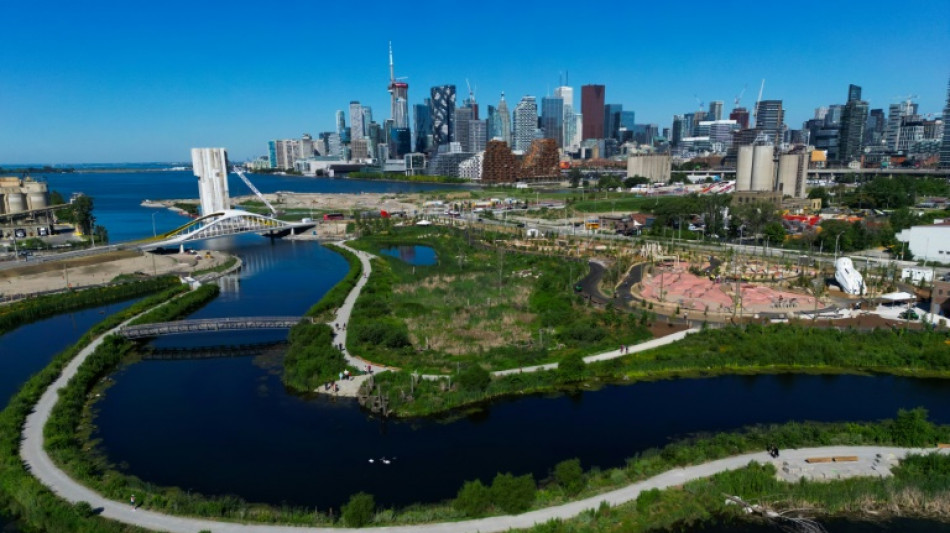
-
 Explorers seek ancient Antarctica ice in climate change study
Explorers seek ancient Antarctica ice in climate change study
-
India's Iyer discharged from hospital after lacerated spleen

-
 Serbia marks first anniversary of deadly train station collapse
Serbia marks first anniversary of deadly train station collapse
-
Latin America weathered Trump tariffs better than feared: regional bank chief
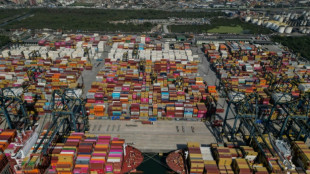
-
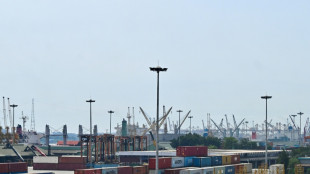 Bangladesh dockers strike over foreign takeover of key port
Bangladesh dockers strike over foreign takeover of key port
-
Tanzania president wins election landslide after deadly protests

-
 Sixers suffer first loss, Bulls stay perfect as NBA Cup opens
Sixers suffer first loss, Bulls stay perfect as NBA Cup opens
-
Dodgers, Blue Jays gear up for winner-take-all World Series game seven

-
 Taiwan's new opposition leader against defence spending hike
Taiwan's new opposition leader against defence spending hike
-
China to exempt some Nexperia chips from export ban

-
 Dodgers hold off Blue Jays 3-1 to force World Series game seven
Dodgers hold off Blue Jays 3-1 to force World Series game seven
-
Crowns, beauty, fried chicken: Korean culture meets diplomacy at APEC

-
 Panama wins canal expansion arbitration against Spanish company
Panama wins canal expansion arbitration against Spanish company
-
Myanmar fireworks festival goers shun politics for tradition
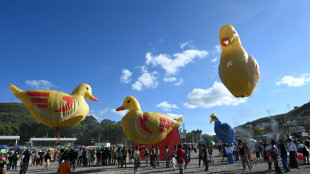
-
 China to exempt some Nexperia orders from export ban
China to exempt some Nexperia orders from export ban
-
Sixers suffer first loss as NBA Cup begins

-
 China's Xi to meet South Korean leader, capping APEC summit
China's Xi to meet South Korean leader, capping APEC summit
-
Japan's Chiba leads after Skate Canada short program

-
 Finland's crackdown on undocumented migrants sparks fear
Finland's crackdown on undocumented migrants sparks fear
-
Climbers test limits at Yosemite, short-staffed by US shutdown
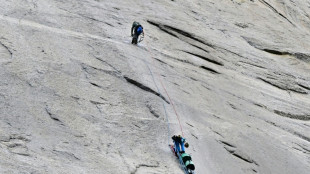
-
 Gstaad gives O'Brien record 21st Breeders' Cup win
Gstaad gives O'Brien record 21st Breeders' Cup win
-
After the tears, anger on Rio's blood-stained streets
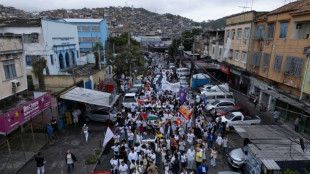
-
 Sinner boosts number one bid in Paris, to face Zverev in semis
Sinner boosts number one bid in Paris, to face Zverev in semis
-
Springer back in Toronto lineup as Blue Jays try to close out Dodgers

-
 Nationals make Butera MLB's youngest manager since 1972
Nationals make Butera MLB's youngest manager since 1972
-
Guirassy lifts Dortmund past Augsburg ahead of Man City clash

-
 G7 says it's 'serious' about confronting China's critical mineral dominance
G7 says it's 'serious' about confronting China's critical mineral dominance
-
NFL fines Ravens $100,000 over Jackson injury status report

-
 NBA refs to start using headsets on Saturday
NBA refs to start using headsets on Saturday
-
Trump says Christians in Nigeria face 'existential threat'

-
 French-Turkish actor Tcheky Karyo dies at 72
French-Turkish actor Tcheky Karyo dies at 72
-
Food stamps, the bulwark against hunger for over 40 mn Americans
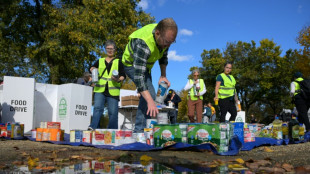
-
 Trump keeps world guessing with shock nuclear test order
Trump keeps world guessing with shock nuclear test order
-
Wall Street stocks rebound on Amazon, Apple earnings

-
 US Fed official backed rate pause because inflation 'too high'
US Fed official backed rate pause because inflation 'too high'
-
Prayers and anthems: welcome to the Trump-era Kennedy Center

-
 Swiss central bank profits boosted by gold price surge
Swiss central bank profits boosted by gold price surge
-
Sinner beats Shelton to boost number one bid in Paris

-
 French court jails Bulgarians for up to four years for Holocaust memorial defacement
French court jails Bulgarians for up to four years for Holocaust memorial defacement
-
Profits dip at ExxonMobil, Chevron on lower crude prices

-
 Ashraf and Mirza skittle South Africa as Pakistan win 2nd T20
Ashraf and Mirza skittle South Africa as Pakistan win 2nd T20
-
2,000 trucks stuck in Belarus after Lithuania closes border: association
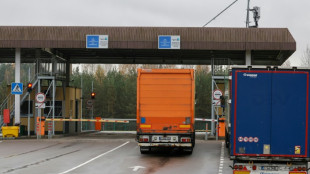
-
 French lawmakers reject wealth tax proposal in budget debate
French lawmakers reject wealth tax proposal in budget debate
-
Premier League blames European expansion for lack of Boxing Day games

-
 Bublik sets up Auger-Aliassime semi-final at Paris Masters
Bublik sets up Auger-Aliassime semi-final at Paris Masters
-
World's most expensive coffee goes on sale in Dubai at $1,000 a cup

-
 Trump stirs global tensions, confusion with nuclear test order
Trump stirs global tensions, confusion with nuclear test order
-
Panic across US as health insurance costs set to surge

-
 Court eases ban on Russian lugers but Olympic hopes on thin ice
Court eases ban on Russian lugers but Olympic hopes on thin ice
-
England captain Itoje targets Autumn Nations clean sweep


Canada project reclaims 'foul' industrial area to contain floods
The spur to build Toronto's billion-dollar-plus flood prevention project dates back to a devastating hurricane in 1954, but planners say its urgency was reinforced by the recent tragic flooding in Texas.
The Port Lands project has, in part, reversed a consequence of industrialization by reconnecting Lake Ontario with the Don River, more than a century after they were severed to create an industrial area.
Chris Glaisek, chief planning officer at the municipal body Waterfront Toronto, said the idea was to "heal the land from the way it was repurposed 100 years ago," with a focus on "flood protection and naturalization."
The complex project -- one of the largest in Toronto's history with a cost of Can$1.4 billion (US$1 billion) -- included digging a river valley and the creation of two new river outlets, with wetlands and marshes to absorb excess water during extreme storms.
The mouth of the Don River was once the Great Lakes system's largest fresh water marsh, a rich habitat and vital food resource for Indigenous people before colonization.
But Toronto, like many North American cities, saw industrial growth in the late 19th Century.
Much of the marsh was drained and filled in to make room for a port industrial area, while the river was re-routed into a man-made channel.
The Port Lands never thrived as an industrial area, leaving a vast stretch of eastern downtown under-used, and the Don River became polluted.
"It was really dirty, it was foul, it was terrible," Toronto Mayor Olivia Chow said recently.
- Hurricane Hazel -
On October 15, 1954 Hurricane Hazel hit Toronto, after hammering parts of the Caribbean and eastern United States.
It killed 81 people across the Greater Toronto Area and served as catalyst for the city to get serious about flood protection.
Hazel flooded the Humber River, in western Toronto, but Glaisek said "it was understood at the time that that same amount of rainfall, had it landed on the (eastern) Don, would have done a comparable amount of damage."
He called Hazel an initial "impetus" to re-naturalize the Port Lands, but rising awareness over the past two decades about the causal link between climate change and extreme floods helped advance the project.
- 'Duty bound' -
To reclaim the Port Lands, Toronto partnered with the US-based landscape architecture firm Michael Van Valkenburgh Associates, which has worked on the Brooklyn Bridge Park and the Obama Presidential Center in Chicago.
Laura Solano, the lead designer, said the project was "duty bound to address catastrophic flooding," but stressed it offered "much more."
Because the area has been reformed to cope with flood waters, parts have been declared safe for new housing -- an urgent need in the expensive metropolis.
There is also a new park, trails and people can canoe or kayak through the rehabilitated Don.
Solano stressed Toronto's initial decision to alter the area was consistent with the times, when North American cities moved to "industrialize their waters...to raise their economic position."
But now, "every city is looking to reclaim their waters," she told AFP.
The Port Lands "shows the world that it's possible to fix the past and turn deficit and remnant industrial lands into living and breathing infrastructure."
- 'The river is going to flood' -
As Glaisek described the project, he stood on a bank that would, by design, be under water during a major storm.
"It's all planned so that it can flood, the water level can rise, the river can get about three, maybe four times wider than it is now, absorb all of that volume of water," he said.
"When the storm event subsides, it will shrink back down to this."
It's a planning approach that recognizes "we're seeing more and more of these events."
"Like in Texas, you see very tragic outcomes when you haven't really tried to plan for nature," he told AFP, referring to flash floods in early July that killed at least 135 people.
He urged planners to "reposition" their relationship to nature and ditch the mindset that "humans (can) control everything."
"Let's acknowledge the river is going to flood. Let's build the space for it."
P.AbuBaker--SF-PST


